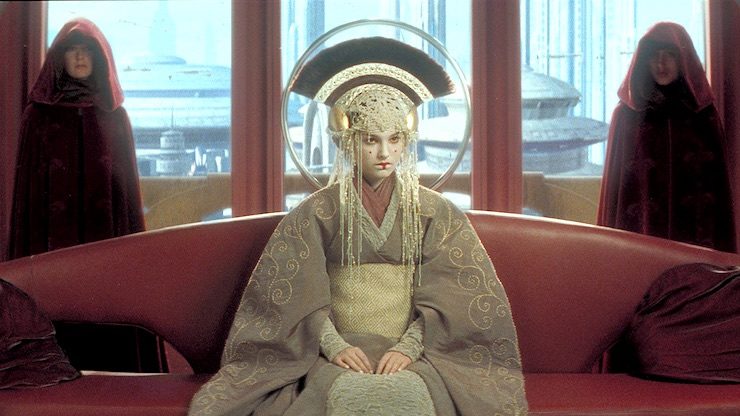What is the significance of the red dress?
You know the dress I’m talking about. The dress. The red one. The woman wore it, the woman who you weren’t sure if you should trust or not, the woman who had everyone’s eyes on her. The red dress that was cut—well, you remember how it was cut.
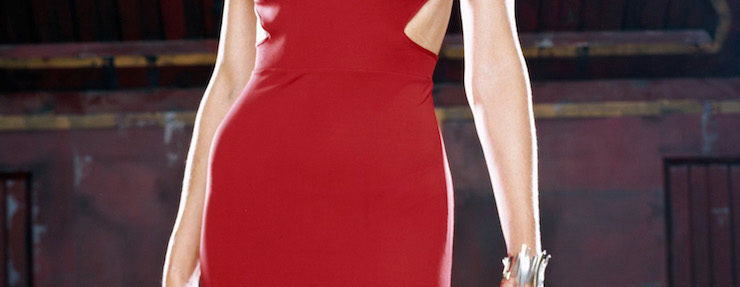
What is it about the white robe?
Yeah, that white robe. Or was it a cloak? You remember? The one that character wore? The character who was really powerful and tough-as-nails and fierce? The character who was occasionally in danger, sometimes in grave danger, but who never flinched? That white robe. Yeah, that one.

Why the black tank top?
It’s so simple, but it’s important. It holds up okay to the scads of abuse it takes. And dang, it takes some abuse. Do you think it’s the reason we knew that she would survive in spite of all the odds? Do you think it’s the source of her unflinching badassery? She wouldn’t be the same without it, that’s for sure.
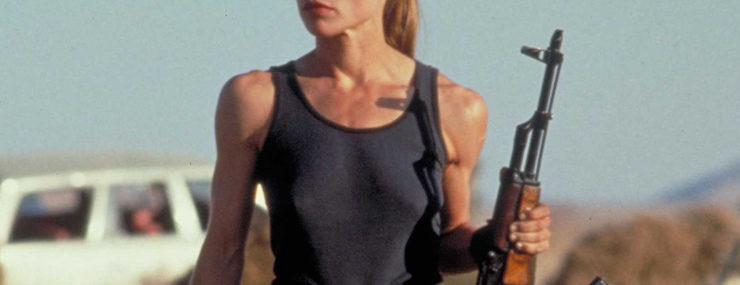
The leather jacket.
The trenchcoat.
The cloak.
The headdress.
The scarf.
The gloves.
The shoes.
Every piece of a character’s costume is a word in a conversation between the creator and the audience. Whether the clothing choices are made by a costumer, a director, or a writer, each decision guides the assumptions and internal narrative of whoever is consuming the media in question. That guidance can highlight characters in obvious ways, like a black cape and a big scary helmet indicating “bad guy.” It can also render them subtly disquieting, like a pink cardigan thinly masking the abject evil of the wearer. Costume choices can be used to unsettle, to misdirect, to shock and to seduce a reader or a viewer. They build the character in the mind of the viewer or reader, paving the way for that character’s story by setting up sweeping assumptions that can then be reinforced or overturned, depending on the goals of the creator.

For a simple example of this, consider Ned Stark’s cloak and tunic from the first episode of Game of Thrones. Assume that the viewer knows nothing about Ned, A Song of Ice and Fire, or George R. R. Martin’s homicidal authorial tendencies—they’ve just tuned in for the first time, and they see Sean Bean in a cloak holding a big sword and staring into the middle-distance. That cloak—and the attendant underpinnings thereof—provide several cues that tell the viewer about the world he lives in.
A quick visual scan makes a significant statement. There’s fur—a whole pelt, in good condition. There’s quilting. The cloak is heavy and worked, while the tunic is worn to whiteness in places. There’s a leather vest in a tone so neutral as to fade almost completely from view under the other more prominent details of the outfit.
These visual touchpoints signal the following: this man is outside in the cold a lot. The cloak says that he can afford to look good while he’s out in the cold, the fur says that he’s proud, and the tunic says that he’s more practical than vain. This is a guy who knows how to get through the winter.
With one glance at Ned Stark’s outfit, the viewer has an idea of how he moves in the world he lives in. The costumer and director have worked together in this scene to prepare the viewer for a story about a proud, practical man who is grimly prospering in an unfriendly world. This simultaneously sets expectations correctly (who Ned Stark is and what he does) and primes the viewer for a huge, unpleasant surprise (what happens to Ned Stark when his pride and practicality turn his prosperity into his grave misfortune).
Lazy costuming is always readily evident, because it ignores the world in which the characters live. For example: every gorgeous thing Padme Amidala wears.
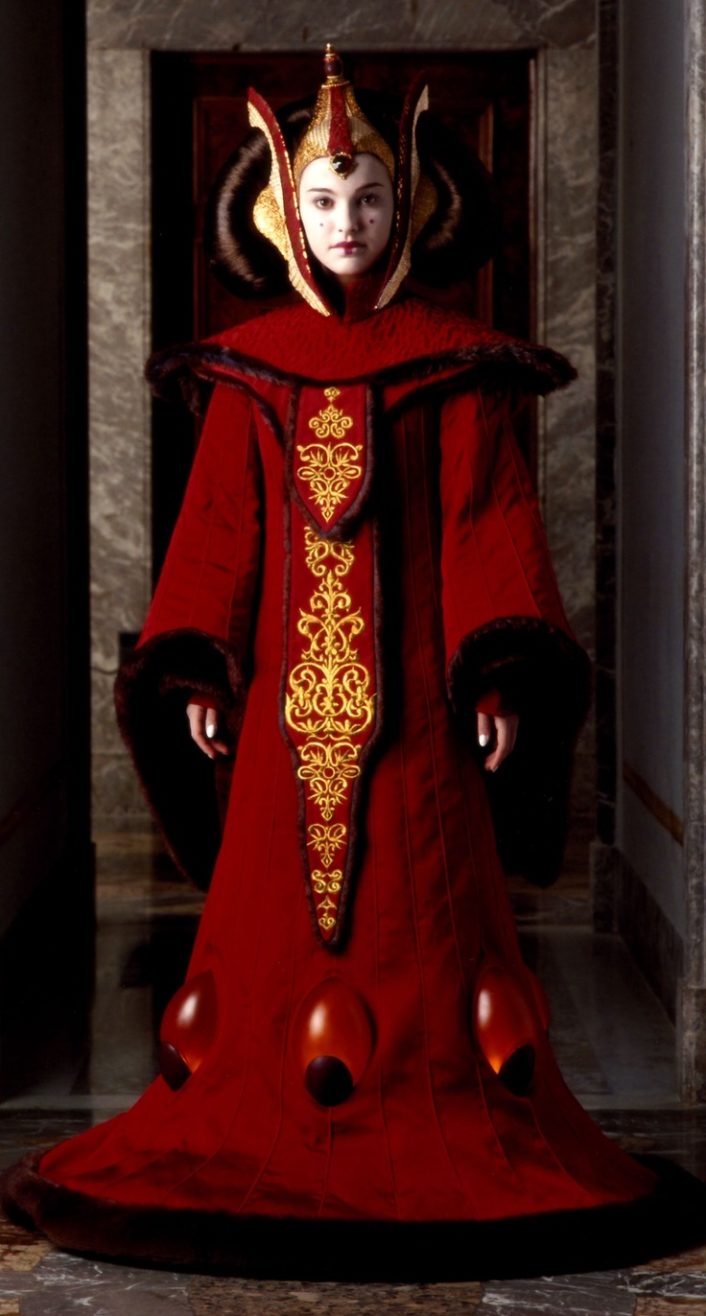
Her costuming is never boring, thoughtless, or obvious—costumer Trisha Biggar’s creativity and ingenuity shines in nearly everything Padme wears, and the outfits are very nearly overripe with referent details and internal significance. Regardless, the disjointed extravagance of Padme’s clothing has nothing to do with her character arc, the world she inhabits, or the practicalities of her life. (Of course, one could argue that the ornate, overwrought parade of outfits she wears throughout Episodes 1-3 are their own kind of signal to the viewer: these movies are going to be a lot, try not to think about anything too much, UNLIMITED BUDGET!! One could argue that. But I digress.)
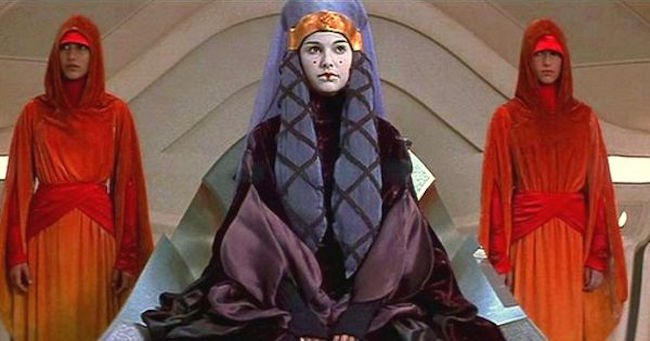
By examining the messages that clothing sends to readers and viewers, creators can find shortcuts that allow for narrative expediency—or narrative deception. By casting a savvy eye over the outfits our favorite characters wear, viewers can start to decode the messages that creators are trying to send them.
Over the next two months, I’ll explore a few of the iconic costume pieces of genre fiction, how they helped to tell the stories we know and love, and how those stories and characters inform the battles we fight today. The world is burning and everything hurts, but damn it, we still have the red dress, the white robe, the black tank top. Fearlessness, courage, and survival: it’s all in the costumes.
 Sarah Gailey’s fiction has appeared in Mothership Zeta and Fireside Fiction; her nonfiction has been published by Mashable and Fantasy Literature Magazine. You can see pictures of her puppy and get updates on her work by clicking here. She tweets @gaileyfrey. Watch for her debut novella, River of Teeth, from Tor.com in May of 2017.
Sarah Gailey’s fiction has appeared in Mothership Zeta and Fireside Fiction; her nonfiction has been published by Mashable and Fantasy Literature Magazine. You can see pictures of her puppy and get updates on her work by clicking here. She tweets @gaileyfrey. Watch for her debut novella, River of Teeth, from Tor.com in May of 2017.










